Joshua P. Yung
The University of Texas MD Anderson Cancer Center
Dimensionality Reduction and Nearest Neighbors for Improving Out-of-Distribution Detection in Medical Image Segmentation
Aug 05, 2024
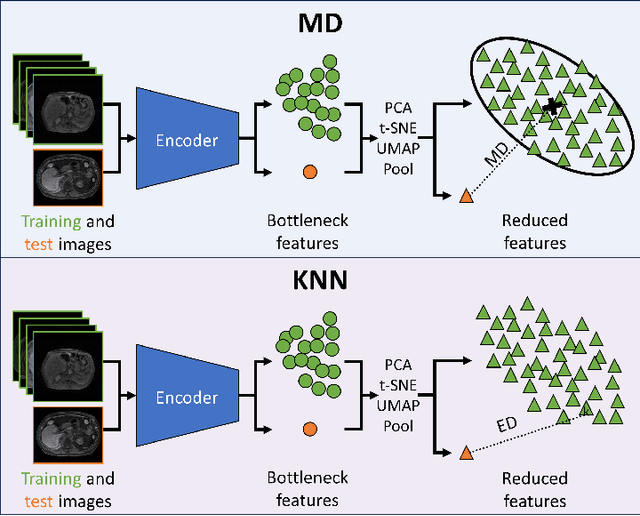

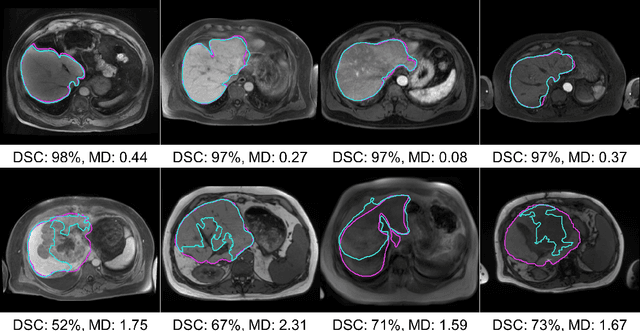
Abstract:Clinically deployed deep learning-based segmentation models are known to fail on data outside of their training distributions. While clinicians review the segmentations, these models tend to perform well in most instances, which could exacerbate automation bias. Therefore, detecting out-of-distribution images at inference is critical to warn the clinicians that the model likely failed. This work applied the Mahalanobis distance (MD) post hoc to the bottleneck features of four Swin UNETR and nnU-net models that segmented the liver on T1-weighted magnetic resonance imaging and computed tomography. By reducing the dimensions of the bottleneck features with either principal component analysis or uniform manifold approximation and projection, images the models failed on were detected with high performance and minimal computational load. In addition, this work explored a non-parametric alternative to the MD, a k-th nearest neighbors distance (KNN). KNN drastically improved scalability and performance over MD when both were applied to raw and average-pooled bottleneck features.
Importance of Feature Extraction in the Calculation of Fréchet Distance for Medical Imaging
Nov 22, 2023Abstract:Fr\'echet Inception Distance is a widely used metric for evaluating synthetic image quality that utilizes an ImageNet-trained InceptionV3 network as a feature extractor. However, its application in medical imaging lacks a standard feature extractor, leading to biased and inconsistent comparisons. This study aimed to compare state-of-the-art feature extractors for computing Fr\'echet Distances (FDs) in medical imaging. A StyleGAN2 network was trained with data augmentation techniques tailored for limited data domains on datasets comprising three medical imaging modalities and four anatomical locations. Human evaluation of generative quality (via a visual Turing test) was compared to FDs calculated using ImageNet-trained InceptionV3, ResNet50, SwAV, DINO, and Swin Transformer architectures, in addition to an InceptionV3 network trained on a large medical dataset, RadImageNet. All ImageNet-based extractors were consistent with each other, but only SwAV was significantly correlated with medical expert judgment. The RadImageNet-based FD showed volatility and lacked correlation with human judgment. Caution is advised when using medical image-trained extraction networks in the FD calculation. These networks should be rigorously evaluated on the imaging modality under consideration and publicly released. ImageNet-based extractors, while imperfect, are consistent and widely understood. Training extraction networks with SwAV is a promising approach for synthetic medical image evaluation.
Dimensionality Reduction for Improving Out-of-Distribution Detection in Medical Image Segmentation
Aug 07, 2023Abstract:Clinically deployed segmentation models are known to fail on data outside of their training distribution. As these models perform well on most cases, it is imperative to detect out-of-distribution (OOD) images at inference to protect against automation bias. This work applies the Mahalanobis distance post hoc to the bottleneck features of a Swin UNETR model that segments the liver on T1-weighted magnetic resonance imaging. By reducing the dimensions of the bottleneck features with principal component analysis, OOD images were detected with high performance and minimal computational load.
Correlation between image quality metrics of magnetic resonance images and the neural network segmentation accuracy
Nov 01, 2021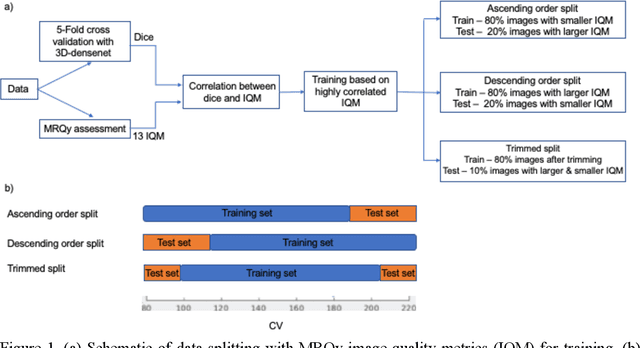
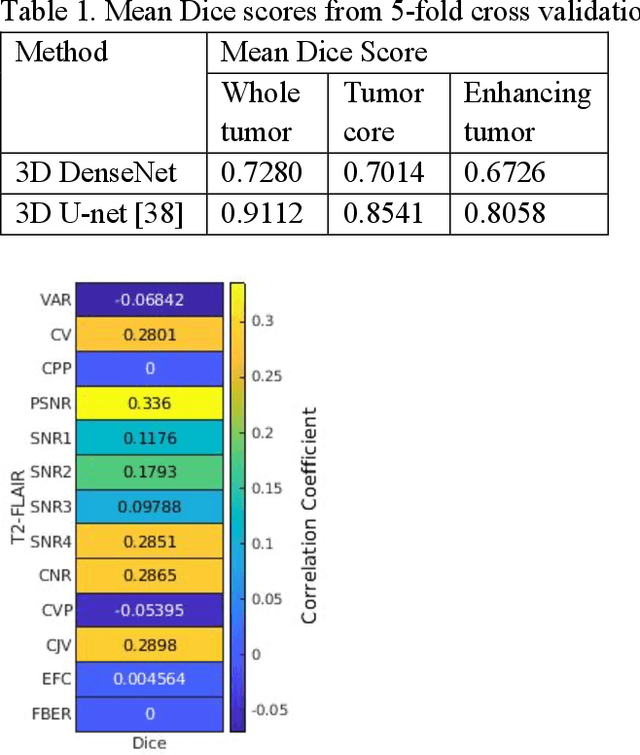
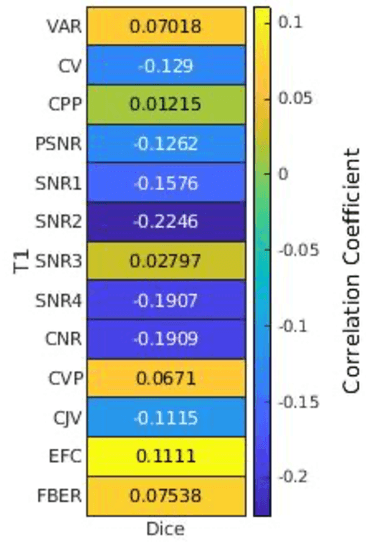
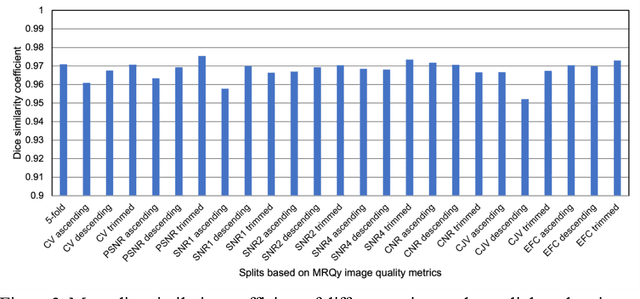
Abstract:Deep neural networks with multilevel connections process input data in complex ways to learn the information.A networks learning efficiency depends not only on the complex neural network architecture but also on the input training images.Medical image segmentation with deep neural networks for skull stripping or tumor segmentation from magnetic resonance images enables learning both global and local features of the images.Though medical images are collected in a controlled environment,there may be artifacts or equipment based variance that cause inherent bias in the input set.In this study, we investigated the correlation between the image quality metrics of MR images with the neural network segmentation accuracy.For that we have used the 3D DenseNet architecture and let the network trained on the same input but applying different methodologies to select the training data set based on the IQM values.The difference in the segmentation accuracy between models based on the random training inputs with IQM based training inputs shed light on the role of image quality metrics on segmentation accuracy.By running the image quality metrics to choose the training inputs,further we may tune the learning efficiency of the network and the segmentation accuracy.
 Add to Chrome
Add to Chrome Add to Firefox
Add to Firefox Add to Edge
Add to Edge